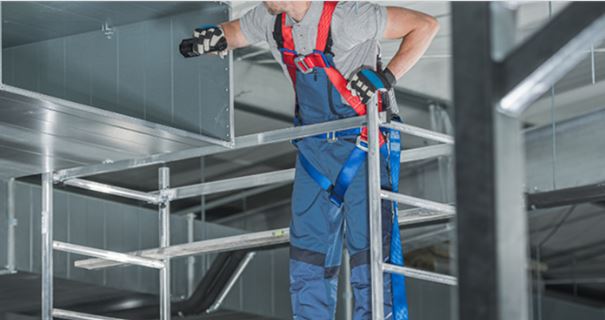As a contractor, do you have a Safety Program that will satisfy OSHA requirements?
Many small to medium companies without a designated safety coordinator on staff do not have a formal, written safety program and may have not realized the need for one. For example, HVAC and plumbing technicians face job hazards each workday and as an employer, it is your responsibility to provide a safe work environment. Providing a safe working environment requires each company to evaluate their job tasks and determine the associated hazards. You are then required, as the employer, to provide safety training to ensure the employees know how to conduct their work safely. A written safety program is the roadmap to achieving this.
OSHA standards address many safety hazards specifically. However, if there is no specific standard, OSHA uses the General Duty Clause to cite employers for unsafe work situations:
 Section 5(a)(1) of the Occupational Safety and Health Act (OSHA) of 1970 states that employers are required to provide their employees with a place of employment that “is free from recognizable hazards that are causing or likely to cause death or serious harm to employees.”
Industry standards should also be consulted for your safety program. Organizations such as the National Fire Protection Association publish standards for addressing a variety of workplace hazards. For example, the NFPA publishes NFPA 70E Standard for Electrical Safety in the Workplace, which applies to HVAC technicians as well as electricians. Applying the guidelines in standards such as NFPA 70E will assist organizations in complying with the OSHA standard for electrical safety.
Section 5(a)(1) of the Occupational Safety and Health Act (OSHA) of 1970 states that employers are required to provide their employees with a place of employment that “is free from recognizable hazards that are causing or likely to cause death or serious harm to employees.”
Industry standards should also be consulted for your safety program. Organizations such as the National Fire Protection Association publish standards for addressing a variety of workplace hazards. For example, the NFPA publishes NFPA 70E Standard for Electrical Safety in the Workplace, which applies to HVAC technicians as well as electricians. Applying the guidelines in standards such as NFPA 70E will assist organizations in complying with the OSHA standard for electrical safety.
So where do you start?
Although they don’t address all exposures associated with your workplace, below are suggested guidelines* for HVAC and plumbing contractors which should be found in a written safety manual. It is not a complete list as you are responsible for determining what hazards exist in your workplace, but it is a good start to the development of your safety program.| HazCom – Including the new GHS Heat & Cold Stress Bloodborne Pathogens Chemicals and Hazardous Materials Respirators and Respiratory Program Personal Protective Equipment Guidelines Equipment Installation Safety Electrical Safety Fall Protection Sheet Metal Air-Duct Fabrication Lockout/Tagout Compressed Gas Cylinders | Electrical Powered Tools General Hand Tool Safety Scaffolding Spray Painting Safety Grinders Materials Handling and Lifting Equipment Vehicle Safety Ladder and Step Ladder Safety Cranes and Hoists Confined Spaces Welding and Brazing Safety General Job Site Rules |

